Beginning with the 2017 NHL Entry Draft, the Ottawa Senators have added what many of their fans hope will be the building blocks of a Stanley Cup champion. Tim Stutzle, picked third overall in the 2020 Draft exploded onto the scene in Ottawa this year adding to the offensive firepower of Brady Tkachuk, the team’s first-round pick in the 2018 Draft. Other recent draft picks such as Drake Batherson and Alex Formenton have cracked the lineup and this year, the Senators picked up Tyler Boucher, an exciting prospect on which the team has placed high hopes.
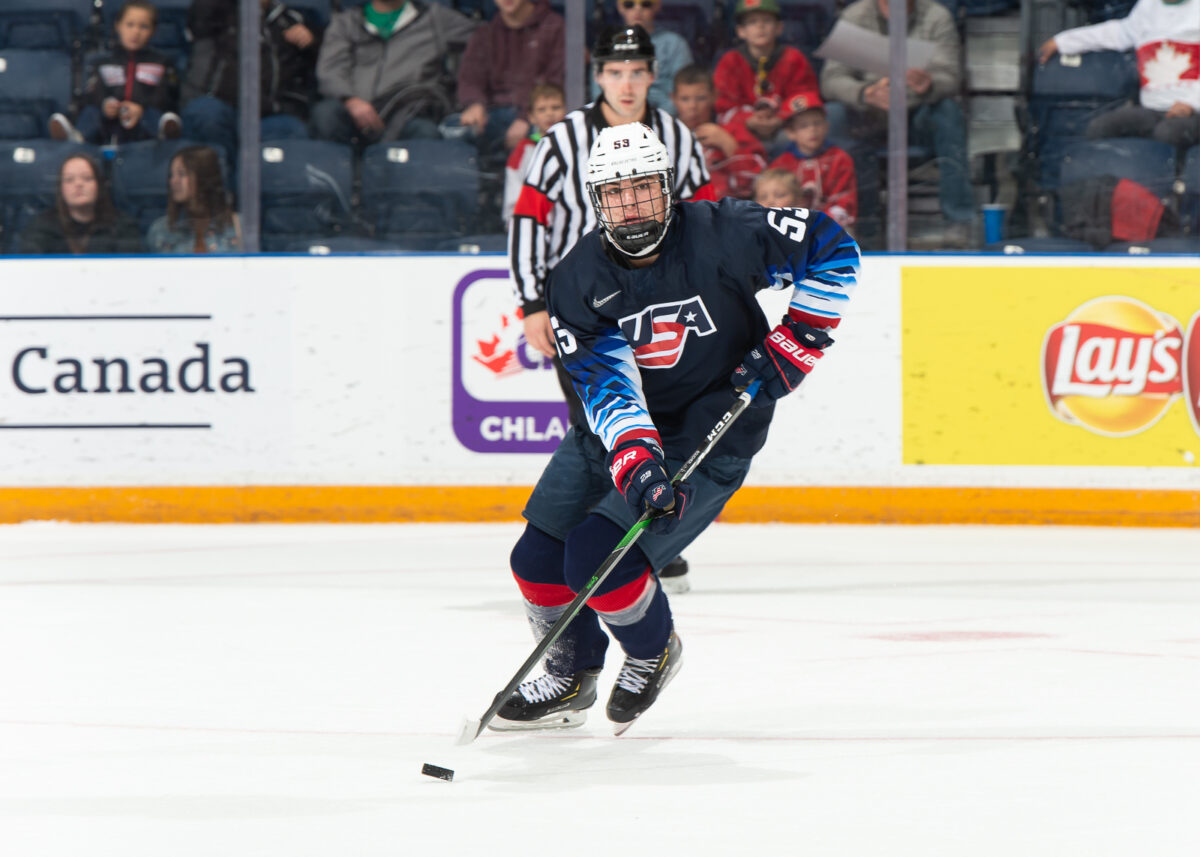
Still, many pundits question Ottawa’s record at building through the draft. Barstool debates broke out in watering holes across the city this year on the pros and cons of selecting this player and not that one. As many Senators fans would tell it, the future of the team rides not on trades, player development or free-agent signings, but on the draft choices the club makes.
That may be true for some franchises, but the reality for the Senators is that they’ve never had great success building through the draft. About half of the players they’ve drafted over their history never set foot in an NHL rink. That’s to be expected for most franchises, but what sets the Senators apart is that of their picks that did make it to the NHL, not many panned out the way anybody had hoped, and even more of them faded away or were traded away.
Related: 3 Senators’ Draft Picks That Didn’t Work Out in Ottawa
What’s more, outside of the very top picks, draft position is a very unreliable predictor of who is going to succeed as a Senator. Many a high draft pick has floundered in Ottawa while low picks became franchise legends.
The Ottawa Senators’ Draft Experience by the Numbers
Ottawa’s middling success as a drafting team is evident by looking at the 212 players they selected over the 25-year period from 1992-2017. Players selected in the 2018 NHL Entry Draft and later can’t fairly be considered in this review because they haven’t yet had a fair chance to make the roster.
Of the 212 selected, 104 (49 percent) never laced up a pair of skates for a single NHL game. Not only that, but one in five of the skaters the team drafted up to 2017 played fewer than 100 games in the league. This is below the figure for the NHL as a whole, where about 28 percent of players drafted manage to play at least 100 games.
Of picks up to 2017, the number that had a significant career in the NHL by playing at least 300 games stands at just 42 (19.8 percent). Yet only 22 of the 42 (52 percent) notched over 300 games playing in a Senators’ sweater.
Ten of the 22 were first-round picks – Alexei Yashin (drafted in 1992, 504 games), Alexandre Daigle (1993, 301 games), Radek Bonk (1994, 689 games), Chris Phillips (1996, 1,179 games), Marian Hossa (1997, 467 games) Anton Volchenkov (2000, 428 games), Jason Spezza (2001, 626 games), Nick Foligno (2006, 351 games), Erik Karlsson (2008, 627 games) and Codi Ceci (2012, 440 games).
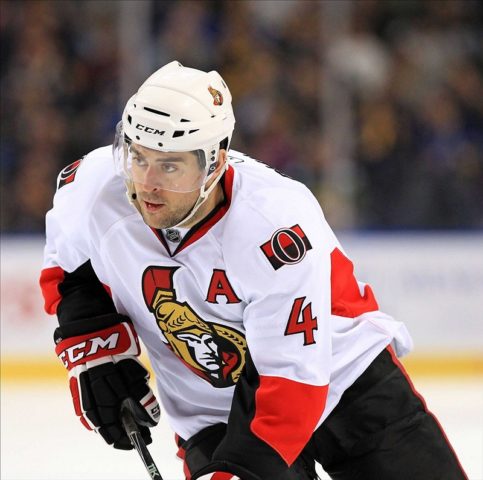
Of the 212 players drafted by the Sens up to 2017, only three (1.4 percent) played over 1,000 games as a Senator – Phillips, Daniel Alfredsson (1,178 games) and Chris Neil (1,026 games).
For the record, just four other players drafted by the Senators managed to skate in over 1,000 games in the league bringing the total to seven, or 3.3 percent of the Senators’ draft picks. The four are Marian Hossa, Mike Fisher, Antoine Vermette and Jason Spezza – all of whom were traded away.
The Impact of the NHL Entry Draft on the Senators
There is no question that the entry draft has been important to the Senators over their modern history. Of the roster that took the team to the Stanley Cup Final in 2007, 11 of 22 players came to the team via the entry draft and among them were some of the biggest names in franchise lore including Alfredsson, Phillips, Wade Redden, Fisher, Vermette and Spezza.
Daigle was arguably one of the greatest draft flops in NHL history. Randy Sexton, the Senators’ general manager (GM) at the time, can be forgiven for that unfortunate choice since everybody in the league wanted the young star and angry mobs would have hanged him on Parliament Hill had he not taken him. What still stings in Ottawa is that to get Daigle, the Senators passed on Chris Pronger and snubbed the Quebec Nordiques’ offer of Peter Forsberg along with first- and second-round draft picks.
Related: The Worst First Overall Draft Picks in NHL History
There have been other draft busts in Ottawa. Who could forget Brian Lee, Ottawa’s first-round pick in 2005? Making his NHL debut in the 2007-08 season with the team, he played just 167 games in a Senators’ sweater and faded away in Tampa in the 2012-13 season with 209 NHL games under his belt. To draft Lee, Ottawa passed on Marc Staal and Anze Kopitar.
Related: Senators Draft Busts: Brian Lee
On the other hand, an undistinguished Swedish kid picked in the sixth round at 133rd overall by the Senators in 1994 went on to win the Calder Memorial Trophy in 1996 as rookie of the year. Alfredsson then captained the team for 14 seasons, proving that draft position has not always been a reliable predictor of which players end up making an impact in Ottawa.

Even still, aside from Daigle, there is no denying that those players the Senators picked up over the years as a top-5 pick have had an impact on the team. It’s just that too many of them were traded away with questionable assets coming back.
A case in point is Radek Bonk who left town at the 2004 NHL Entry Draft in exchange for a third-round pick from the Los Angeles Kings. The next year, the team gave up Hossa in exchange for infamous malcontent Dany Heatley. He went on to earn a spot in the Hockey Hall of Fame after appearing in five Stanley Cup Finals and helping the Chicago Blackhawks win three.
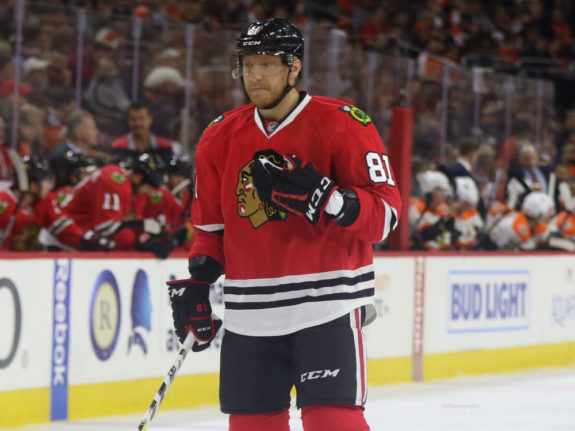
When the Senators have not traded away some of their best draft picks for meagre returns, they have mismanaged others. Many felt Curtis Lazar, the team’s first-round pick in 2013 at 17th overall was rushed along too quickly to the big club instead of being allowed to develop in the minors. In the end, he was traded to the Calgary Flames at the trade deadline in 2017 in return for a player who wore a Senators’ jersey in just three games and a second-round pick who luckily turned out to be the up and coming Formenton.
Conventional wisdom is that the higher the round in which a player is chosen, the more long-lived their career is likely to be. In Ottawa that link is weak, with about half the draft picks whose careers spanned more than 1,000 games being mostly low picks. On the list are Alfredsson (selected sixth round, 133rd overall in the 1994 Entry Draft), Chris Neil (sixth, 166th, 1996), Fisher (second, 44th, 1998) and Vermette (second, 55th , 2000).
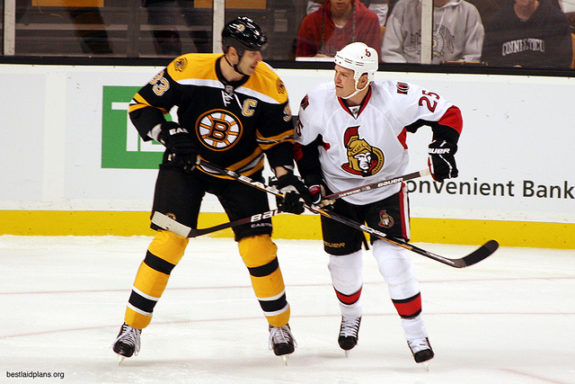
Even some of Ottawa’s best first-round picks have been relatively low. Erik Karlsson was selected 15th overall in 2008, Martin Havlat at 26th in the 1999 Draft, and Nick Foligno 28th in the 2006 Draft.
Whatever shortcomings the Sens may have when it comes to drafting, they can take some consolation knowing that the entry draft, while still key to building a team, is becoming less critical. A 2018 study of NHL players showed that 20 percent were undrafted. Even still, Ottawa is notoriously frugal and its GMs have never been able to spend lavishly on free agents or be aggressive at the trade table. That makes the draft perhaps more important for Ottawa than it is for other teams.
Despite the growing importance of undrafted players, Ottawa has never had much luck in building with them. In Calgary, former Flame and longtime team captain Mark Giordano as well as star defenseman Chris Tanev were both undrafted. Other NHL greats who were undrafted included Ed Belfour and Adam Oates, to name a few.
Related: Best Undrafted Players in NHL History
It’s not that Ottawa hasn’t had opportunities to develop with undrafted players. They offered Tampa Bay Lightning great Martin St. Louis a tryout prior to the 1997-98 season. They passed on him only to watch the diminutive winger go on to win the Art Ross Trophy (leading point scorer), the Lester B. Pearson Trophy (most outstanding player as chosen by players), the Hart Trophy (most valuable player), the Lady Byng Trophy (most gentlemanly player) and a Stanley Cup (2004) before retiring in 2015. What Ottawa wouldn’t give for an undo button on that call.
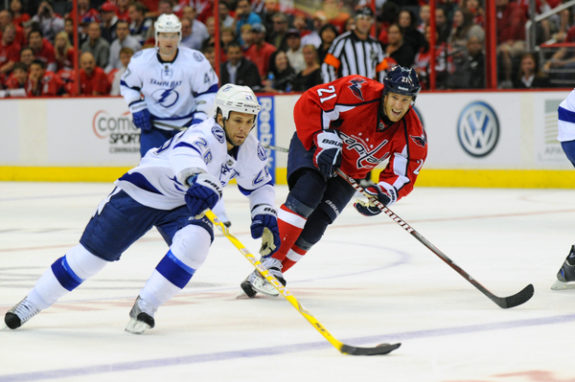
There are a lot of reasons why many of the Senators’ first-round picks since 1992 did not make the impact on the team that was expected. Some such as Daigle were never able to make the tough transition to the NHL. Some were mismanaged (Lazar) while still others such as Jakub Klepis were traded away without ever suiting up for the team. The organization’s first-round pick in 2002, he was immediately dealt to the Buffalo Sabres in return for Vaclav Varada who managed to score 12 goals for the Senators in 117 games before heading back to Europe in the summer of 2006.
In other cases, poor chemistry with the team or disciplinary problems resulted in either top picks requesting a trade or being happily shipped out of town with a sigh of relief by team management — think Alexei Yashin and Bryan Berard. To be fair, none of this is unique to the Senators. Many teams have come to regret some of their first-round draft picks.
Goaltender Picks Are Really Tough
When it comes to drafting goalies, much of the luck the Senators have had is of the bad variety. One of the most notable draft busts in team history was goaltender Mathieu Chouinard. After a highly successful junior career in the Quebec Major Junior Hockey League (QMJHL), he was chosen by Ottawa in the first round of the 1998 Draft. By 2000, after failing to reach an agreement to play with the team, he went back into the draft pool only to be chosen by the team again — this time in the second round.
He spent three years in the minors with the Senators’ organization before being picked up by the Kings in 2003 as a free agent. With them, he made his only NHL appearance in the dying minutes of the third period of a 2004 match against the Anaheim Ducks.
Related: The Worst First Overall Draft Picks in NHL History
Aside from Chouinard, most of the Senators’ entry draft goalie picks from 1992-2017 were chosen late and most had unremarkable careers, playing fewer than 100 games in the league. Drafting goalies is regarded as a crapshoot with few teams willing to chance high draft positions on them.
The Sens’ meagre results at drafting crease defenders could be due to poor player development, yet the team has a penchant at times for trading away goalies that go on to thrive with other teams.
Perhaps the best example is Vegas Golden Knights’ standout Robin Lehner (second-round pick, 2009) who in 2014 was widely regarded as a possible Ottawa franchise goalie. Senators management shipped him out of town for Buffalo’s 21st-overall pick in 2015. Still, some point out that with that pick they acquired centreman Colin White.
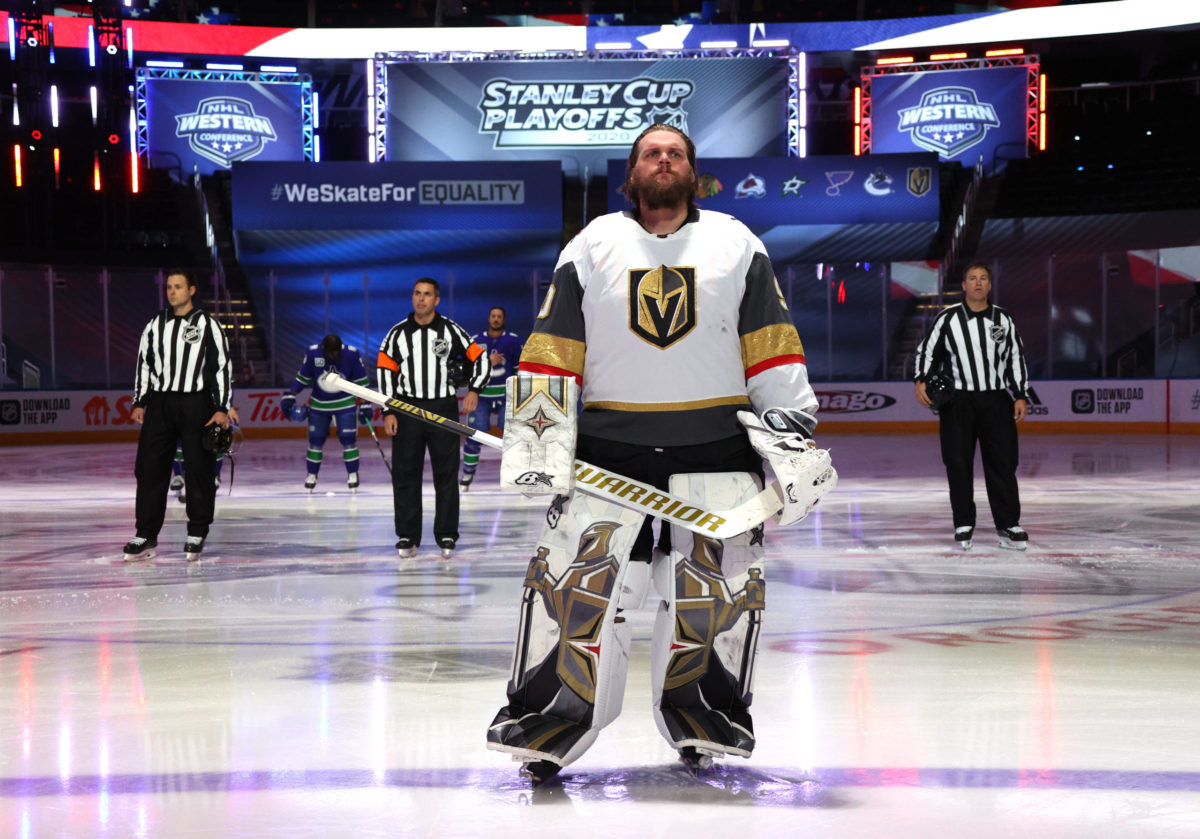
Brian Elliot, Ottawa’s 291st pick in the 2003 Draft was traded away in 2011 for Craig Anderson as part of a Senators rebuild. He eventually went on to resurrect his career with the St. Louis Blues where he was tapped to appear in two NHL All-Star Games and backstopped several playoff runs the team made. Some say Ottawa overpaid for Anderson, putting too much value on his past performance with the Colorado Avalanche.
Related: Ottawa Senators’ 3 Worst Contracts Ever
Another notable but not stellar Ottawa goalie pick was the late Ray Emery (selected 99th overall in 2004) who defended the Senators’ crease in their run to the Stanley Cup Final in 2007. That Emery found himself in that spot was owed more to fate than farsighted drafting and sound player development. An injury the previous year to the Senators’ star goalie Dominik Hasek and the struggles of Martin Gerber, selected to replace him, left the team with no choice but to run with Emery. He played only 134 games in an Ottawa jersey.
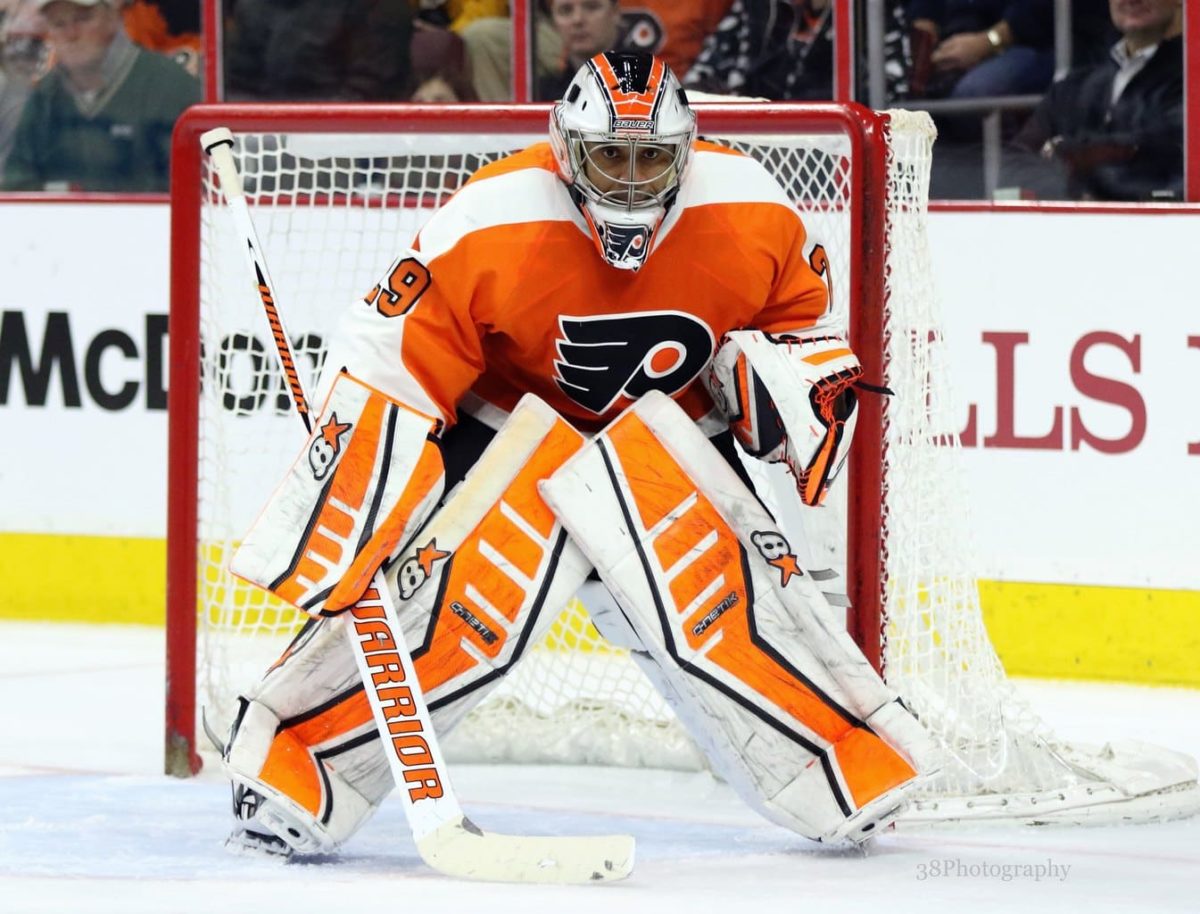
The seven other goaltenders the Sens drafted from their inception to 2017 never played more than a handful of games in the NHL. That’s as much testimony to questionable drafting as poor player development.
Ottawa Senators Need to Draft Better
The Senators have never been noted as a strong drafting team. They have had far more luck building the team through trades (Wade Redden, Karlsson, Zdeno Chara and Spezza), free agency signings (Hasek, Sergei Gonchar, Randy Cunneyworth), and old-fashioned player development (Alfredsson, Neil, Batherson, Jean-Gabriel Pageau).
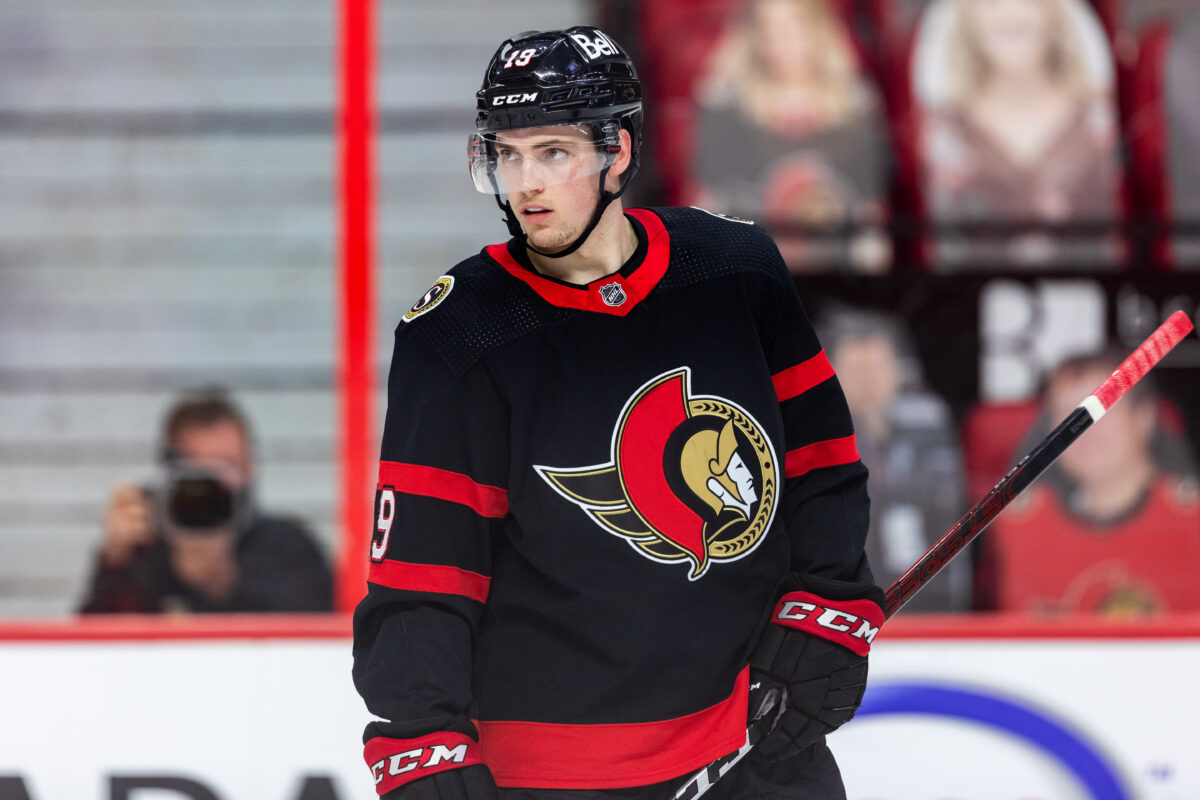
What’s more, the Senators have never been willing to lay out big dollars to bring top talent to town. They are a team that must find success building through the draft.
As The Hockey Writers’ draft and prospects expert Matthew Zator points out, “the draft is a starting point that teams can’t ignore. Picks in the first two rounds are almost certain to break into a team’s roster. But once a player is in the organization that’s when the real work begins and player development is the biggest thing.”
Related: 2021 NHL Draft Guide
If the right picks are made, the draft combined with player development can be the least expensive way to build a team over the long run. Even for teams whose window on a Stanley Cup win is closing, the draft is critical since picks and prospects are a way to buy roster players who can make an impact.
Time will tell whether the Senators’ picks in the drafts of the last few years will break a long history of mediocre results in building through the NHL Entry Draft.